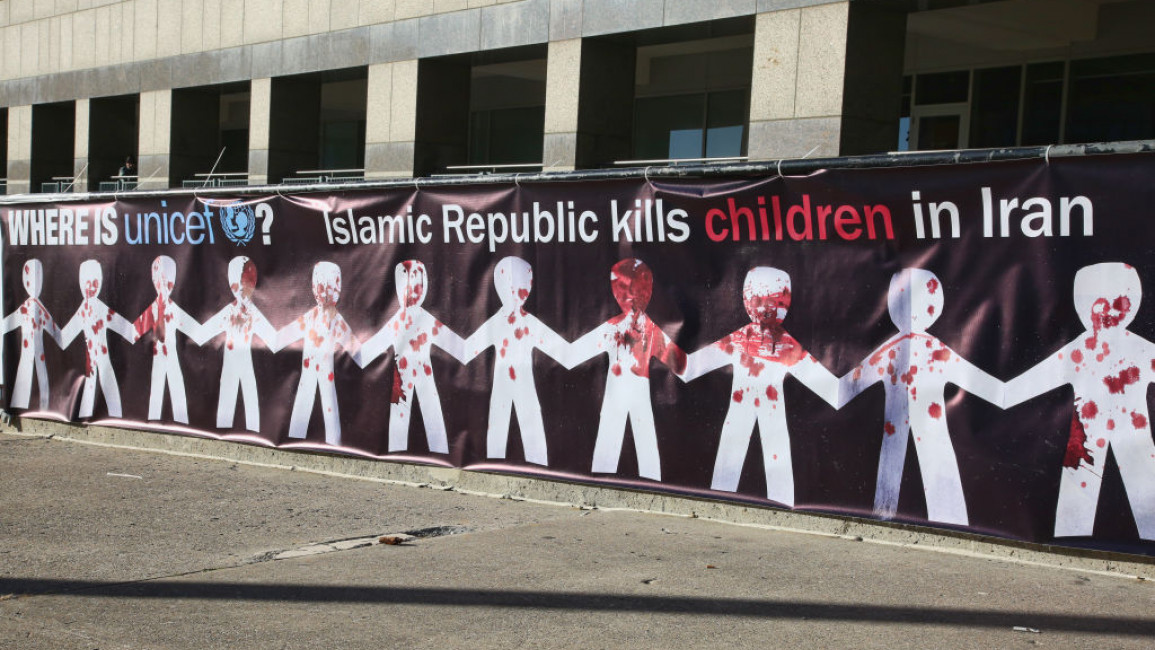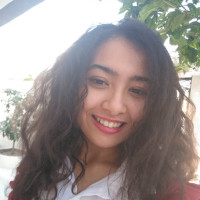
The Iranian regime is sacrificing a whole generation of young people
Iran is a country of many paradoxes and one of the more painful ones these days is that a regime run by old men, is sacrificing its youth. In the protests that have been raging across Iran in the past months it is increasingly young people – even schoolchildren – who are risking and even losing their lives.
The regime itself is also reportedly recruiting children from impoverished families to help “suppress” the ongoing street protests, in exchange for a “few bags of food.” It seems that in the Islamic Republic, children’s lives are cheap, if not worthless.
The tactic of the regime is not a new one – it was arguably one of the reasons Iran could withstand the eight-year war with Iraq (1980-88). An army of child soldiers was used to fight against Iraq’s much better equipped military. These children, some as young as nine, were at times roped together to stop them from escaping, and used in human wave attacks or sent over minefields to clear the path for the Islamic Revolutionary Guard Corps (IRGC).
''The death of these children, therefore, speaks of a desperation, both on the part of these young people, as well as that of the regime – which by sanctioning this use of brute and fatal force is showing that it is clinging to power at all costs. It also shows the hypocrisy of the leadership, which has repeatedly condemns Israel for killing Palestinian children, touting it a “child-killing regime”.''
Many of the soldiers captured by Iraqis during the war were, in fact, in their early teens. They were sent to war armed with small keys to wear around their necks, which they were assured would give them access to heaven if/when they were martyred. Of course, at that juncture, the regime’s rhetoric was that they were fighting a “just” war - a Defa-e Moqaddas (Holy Defence), of country and faith, given that Iraq was seen as the aggressor, and the ensuing war a jihad.
On the other side of the divide, the youth of the country are also leading the demonstrations. Since the death in custody of 22-year-old Mahsa (Jhina) Amini on 16 September, at least 416 people have been killed (with more than 18,000 arrested), by the security forces of which at least 58 were children.
One of the latest victims is nine-year-old Kian Pirfalak who was fatally shot in the chest by the security forces in the town of Izeh, in the Khuzestan Province, as he made his way back home with his father, who was also shot in the back in their car. Two other boys were also reportedly killed in the same town, 14-year-old Sepehr Maghsoodi and 14-year-old Artin Rahmani.
As usual, the regime has tried to place the blame elsewhere – in this case it was supposedly “terrorists” – however, this was denied by family members.
Schoolgirls are particularly at the forefront of this battle, with many videos showing girls taking off their hijabs, chanting anti-regime slogans, and giving the finger to the leaders of the Islamic Republic. These fearless girls seem unphased by the regime’s threats and are repeatedly seen attacking pro-regime agents and driving them out of their schools.
On 20 November, World Children’s Day, a Mullah and a Basiji, who had visited a girls’ school in Qom, beat 13–14-year-olds, after the girls had allegedly ‘insulted’ them. One girl was even hospitalised.
The Iranian regime has itself stated that the average age of arrested protesters is 15, claiming that these young people are being encouraged by social media and the foreign media to “sacrifice themselves” in the protests. It is now also trying 10 underage protesters with death penalty charges.
Nevertheless, it has become evident to the youth of the country that there is no future for them as things stand in Iran - they are tired of being dictated to by a regime of old men who are out of touch with the realities of the modern world and the desires of their people. They are also clearly willing to do whatever it takes to change the status quo, including losing their lives.
The death of these children, therefore, speaks of a desperation, both on the part of these young people, as well as that of the regime – which by sanctioning this use of brute and fatal force is showing that it is clinging to power at all costs. It also shows the hypocrisy of the leadership, which has repeatedly condemns Israel for killing Palestinian children, touting it a “child-killing regime”.
This blatant killing of women and children has caused large sections of the population, including the previously sympathetic to the Islamic regime bazaars, to close shop in solidarity with the country-wide strikes on the 15 November which lasted three days.
The strike was called to honour the memory of the 1500 killed by the regime during protests over fuel rises in 2019.
Indeed, it is not the first time that the regime has brutally cracked down on protestors and killed and arrested thousands of its citizens, but it is the first time that those being killed are so young. This may also be the reason for the outpouring of international indignation this time around.
Nonetheless, there has not been any meaningful action from foreign governments and human rights organisations to safeguard the lives of these children. The Iranian actress Golshifteh Farahani, who lives in France, has been one of the many people calling UNICEF out for their lack of intervention and accusing them of having forgotten the purpose for their existence.
Notwithstanding the legal and democratic implications of the regime’s actions, it must be pointed out that murder is also forbidden in Islam, particularly the murder of fellow Muslims, women, and children, as whoever commits such a crime faces the eternal punishment of Hell (Quran 4:93). Thus, the question one begs to ask is how can a regime that has built its legitimacy based on Islamic law and adherence to the letter of the Quran, so blatantly ignore these teachings and expect to retain its legitimacy in the eyes of God, not to mention its people and the international community?
Additionally, given the regime has always been critical of the previous Pahlavi leadership and the West, how can it not be accused of hypocrisy if it acts in the same manner?
The Iranian regime is, therefore, not only ignoring human rights, women’s rights, children’s rights, but more dangerously for them, it is ignoring the teachings of Islam, and their own proclamations and promises. They are no longer (though perhaps never were) “Islamic” or a “Republic” in any meaningful sense of the words. Their rule has lost any popular credibility that it may have had and they are now ruling by brute force and dictatorship – the very things that they professed to be fighting against when they established the Islamic Republic.
Katy Shahandeh is a final year PhD candidate at SOAS, a research and teaching assistant. Her academic interests are Middle Eastern (with an emphasis on Iran) art, history, culture and society, and her research, based on the works of contemporary Iranian women artists, is located around issues of gender, identity, and society, and informed by feminist and post-colonial theory. She has presented papers at many international conferences and has contributed to a volume published by Routledge entitled Curating as Feminist Organizing (2022).
Join the conversation @The_NewArab.
Have questions or comments? Email us at: editorial-english@newarab.com
Opinions expressed in this article remain those of the author and do not necessarily represent those of The New Arab, its editorial board or staff.




